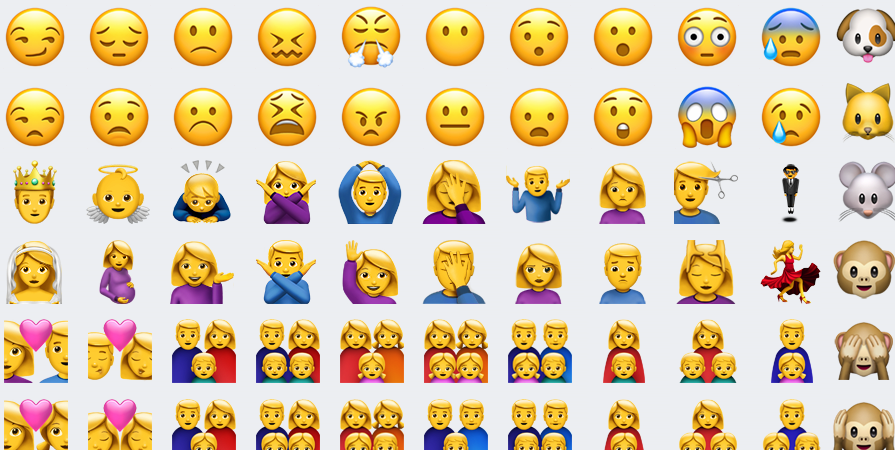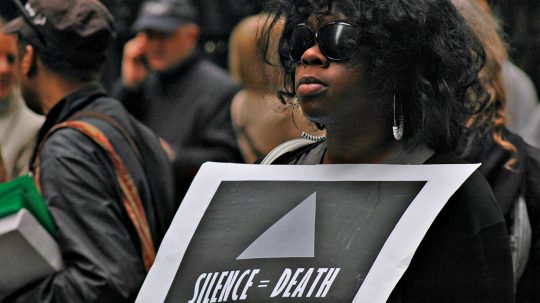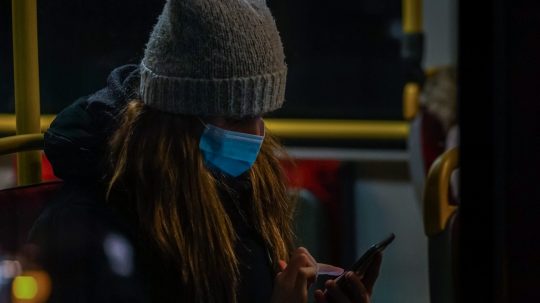Emojis are the first truly global language. No, really. As more and more of us have access to a computer or phone, its use continues to rise, not just as a fun twist on texting, but as a modern necessity.
Across languages and cultures the definition of any individual Emoji is usually the same. We all know there is an agreed understanding of what each one means. When we see emojis like gritted teeth, polished nails, or even the humble peach, we understand immediately what is being said, regardless of where in the world it came from.
So why is it, then, that certain groups of people have access to a wider range of expression in this form compared to others?
A default colour that doesn’t work anymore

From their creation in 1999, all the way up until the modern age of 2015 Emoji came in just one default colour – yellow. While this was originally intended as a “generic, non-realistic” cartoon style, it eventually came to be commonly recognised as white skin.
Sure, this might not be *exactly* a human rights issue, but both diversity and free expression are core values of the Human Rights Convention. The slow crawl to Emoji diversity means the language has, until recently, failed to be an equal platform to communicate between cultures. Instead, it’s ended up putting more favour on Western nations’ standards instead of being a shared global tool.
Emoji academics (yes, a real job) Luke Stark and Kate Crawford have described how the “the emancipatory potential of Emoji is restricted by their […] commercial limitations”. Basically, experts are also saying Emojis have the potential to give us much more freedom to communicate, but we’re being held back by a lack of diversity.
Steps in the right direction

A useful comparison here is The Simpsons. The main cast of the cartoon have yellow skin, but characters of colour are depicted more realistically in shades of brown, creating a distinction between skin tones that, in setting white as a ‘default’, ends up excluding non-white people.
The introduction of skin gradients to Emoji in 2015 was a welcome step in the right direction in terms of providing global access to equal and open expression, but there is still a way to go before Emoji can be seen as a truly inclusive global platform for shared culture and ideas.
Besides the progress that has been made in reflecting its users’ racial diversity, many Emojis rely on out-dated ideas which not only exclude certain groups but reinforce oppressive concepts. For example, all female Emoji have long, shoulder length hair, while all male Emoji all wear a clean and short trim. It’s also only this year we’ve finally been promised a ginger emoji, or a woman wearing a headscarf.
The internet age is making new demands on writing practices, regulating traditional practices increasingly to the margins
Another Emoji academic (seriously, there’s hundreds of them), Marcel Danesi, wrote that “the internet age is making new demands on writing practices, relegating traditional practices increasingly to the margins”. Given the immediate worldwide accessibility and assumed equality of digital life, it’s really not a stretch to argue that Emojis should as fully reflective of the diversity of the people using them as possible.
A language out of users’ control

Just as verbal language has been refined and policed, making political and social ideas both clearly defined and accessible to every human being, Emojis should be held to the same standards. Despite the significance of full expression through the first global language, Emoji, unlike any other language, remains out of the control of the people who use it.
While verbal language with a violent history such as “queer” can be reclaimed by affected communities, the palette of emojis available to users are controlled entirely by corporations with less interest in creating and upholding a flexible language.
An increasingly important language

The need for true freedom of expression through Emoji might seem superficial. We use Emoji socially, to add a wink or a smile, safe in the knowledge our meaning will be understood. And that’s exactly why it is so important.
The internet is tone-deaf, and any open platform that allows shared connections and enhanced relationships through better understanding is something that needs to be protected.
As with all comment pieces, this article is the opinion of the author and not RightsInfo.






